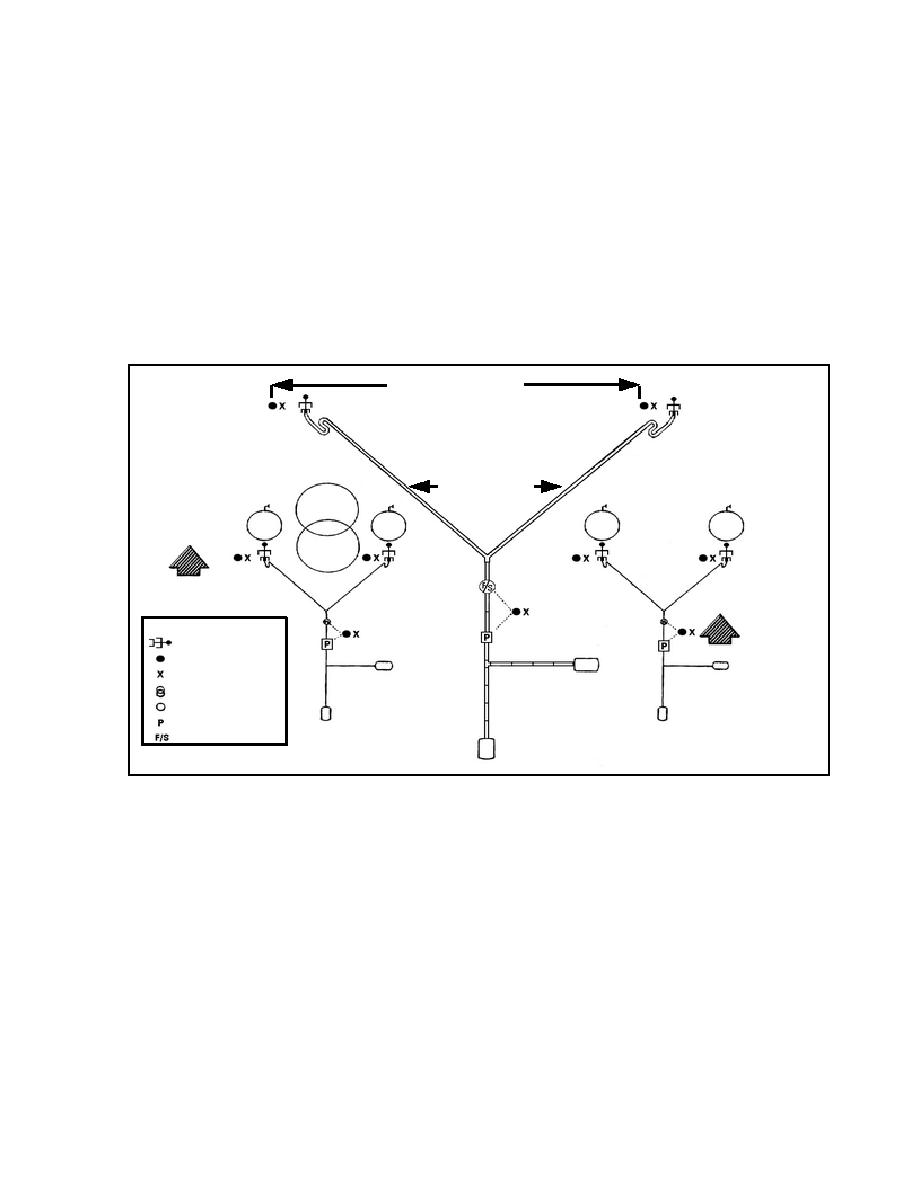
Site Preparation. All sticks, stones, and debris should be cleared from the area. To prevent fires, clear
dry grass, leaves, and brush away from the pumping assembly. In some cases, engineer personnel prepare
the site.
Layout. Once all equipment is on-site, lay out the FARE system in the way that is best for the specific
situation. Tailor the layout to avoid obstacles, take advantage of terrain features, achieve maximum
dispersion, and operate with a restricted amount of space. The only mandatory feature of the FARE system
is the spacing between the aircraft (Figure 5-1). The suggested sequence of setup is as follows.
Position pump and filter/separator.
Ground pump and filter/separator.
Assemble discharge hose.
Assemble dispensing points.
Connect to two 500-gallon collapsible drums.
Position fire extinguishers.
Approximately 100 Feet
Discharge Hose
Wind
LEGEND
CCR Nozzle
Wind
Ground Rod
Fire Extinguisher
Refueling OH-6, OH-58,
CH-47
AH-1, UH-60A, AH-64, and
Single Rotor Aircraft
UH-1 Single Rotor Aircraft
Pump
Refueling CH-47
Filter/Separator
or CH-54 Aircraft
Figure 5-1. Typical FARE layout.
PART C - QUALITY SURVEILLANCE
The quality and cleanliness of turbine fuel are vital to the safety of turbine-engine-powered aircraft. Turbine
engines have more stringent cleanliness requirements than do reciprocating engines. Because turbine
engines have high fuel consumption rates, contaminants accumulate in them rapidly. Turbine engine filters
cannot remove fine sediment, excess amounts of sediment, or water from the fuel. Separating the
contaminants from JP-5 and JP-8 is time-consuming and further complicated by their high viscosity and
specific gravity. Any unit or organization that has military-owned aviation fuel in its physical possession is
responsible for establishing and maintaining an adequate quality surveillance program. Each person
involved in aircraft refueling is responsible for ensuring that the fuel pumped into an aircraft is clean, bright,
on specification, and does not contain any free water or sediment.
Quality surveillance testing and sampling are used to find common contamination hazards. The hazards
that may affect aircraft are sediment, water, microbiological growth, and commingled fuel. Since each
5-3
QM 5095


 Previous Page
Previous Page
